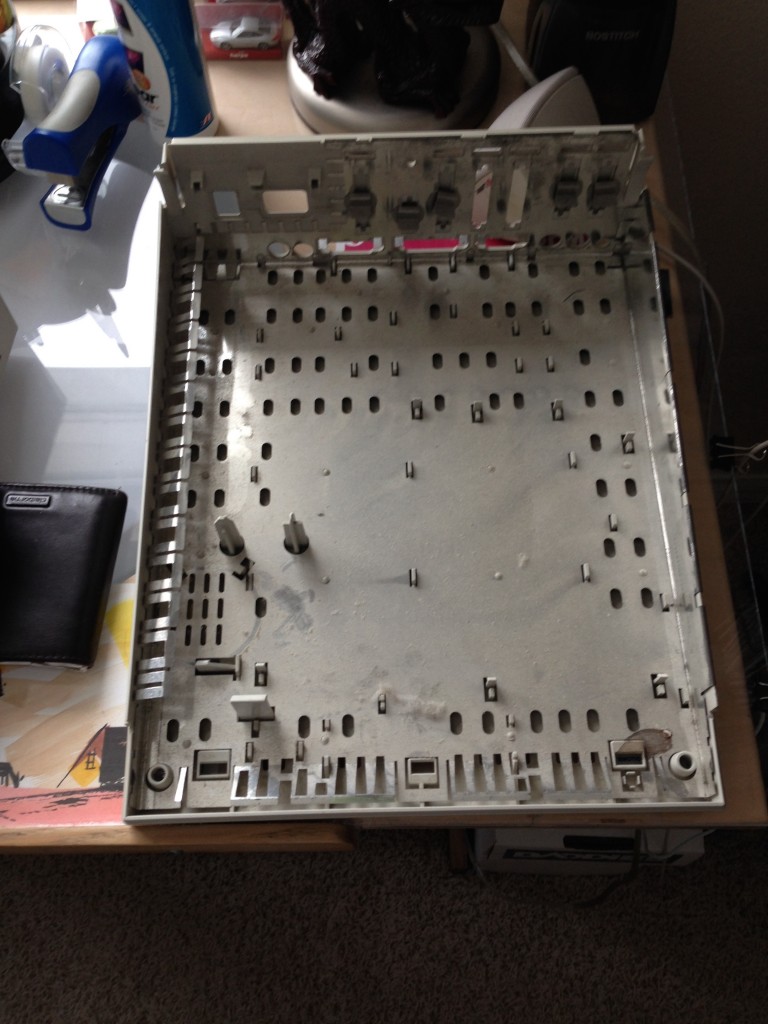Zen and the Art of Old Computer Maintenance
There is something deeply satisfying and meditative about cleaning up an old computer.
I spent several hours this afternoon taking apart two Apple IIGS machines, right down to the motherboard, to give them both the most thorough cleaning they’ve had since I’ve owned them. Both IIGS’s are Wozniak edition models, made between 1986 and 1988. One was purchased new in August 1987 by my father, the other was purchased in 1991 by yours truly, when a friend of mine was unloading his Apple II gear.
I haven’t opened up either machine in many years. Of course, I wasn’t surprised to find both machines fully immersed in layers of dust. With a combination of diluted hydrogen peroxide and compressed air, I lovingly restored these beauties back to “new”.
As I cleaned the computers up, I couldn’t help but marvel at how far technology has come since the IIGS. It’s easy to be spoiled with the latest smartphone or PC, but the late 80’s were an entirely different scene. The IIGS came with at stock 256KB (yes, kilobytes) of RAM and sported a blisteringly fast (not really) 2.8 MHz (yes, megahertz) 65C816 chipset. In my view, the IIGS was hobbled to keep it from competing against the Mac line – but it sold like gangbusters when it was released.
The Apple IIGS still impresses me today because it was a very accessible machine. Pop the top off and you’re in business. Adding cards and peripherals was easy, thanks to the myriad of ports on the back and 7 expansion slots. Best of all, there were no fancy tools needed to bring the IIGS down to its constituent parts. Compare that to the closed systems that Apple sells today.
The Apple IIGS ignited my interest in computing. I learned about hardware, software, and OS’s from the IIGS. I can remember many hours pouring over hardware, installing cards, adding peripherals, and even reading A+ Magazine into the wee hours of the night. Before the Internet, the only source for new computer news was via books and magazines. As a teen, I must have read each and every A+ magazine at least 100 times, but I digress…
The Apple IIGS was a really great first computer for me. It was very Mac-like, and made the transition to classic Mac OS and now OS X very easy. It’s wild to think that I’m still using the same basic UI paradigm that I learned how to use in 1987.
So now, let me take you through some photos of Operation: Double IIGS Clean-up:
This particular IIGS is barebones – there are no cards inside it. This was from the machine I purchased used.
This is the IIGS that my dad purchased for our family. It is fully loaded with cards, though I seem to have lost the top lid of the power supply. Here it is, caked in dust.
The IIGS, like many computers of its day, came with a CMOS battery to store basic parameters (time, hardware settings etc.) This was a make-shift solution utilizing three AAA batteries.
Here is the backside of the IIGS. Note the VGA port, which is attached to a very rare SecondSight VGA card. Only a few hundred were produced, as I seem to recall.
Here’s a close-up of the SecondSight VGA card. This was the only card that would allow an Apple IIGS to utilize a VGA monitor. It did its work well, but because the IIGS was meant to work only with RGB displays, there were obviously some compromises with its design.
This is the ZipGS accelerator card, that brought IIGS microprocessor speed up from 2.8MHz to 8MHz. I became a nerd the day I installed this card. And I’ve never looked back!
And here it is, all cleaned up!
These days, both IIGS’s remain unplugged. They bookend my computer desk setup. One serves as a monitor stand, while the other houses a Lego VW bus. Cleaning up these computers brought back some great memories for me. It gave me time to relax and think about the heyday of personal computing. And that made the effort all worth it.
-Krishna













No comments yet. Be the first!